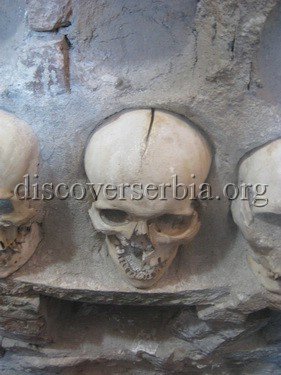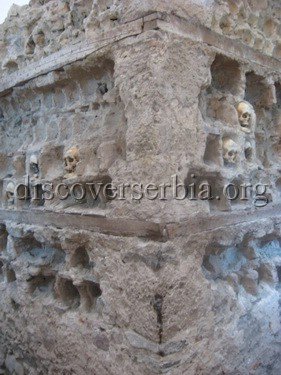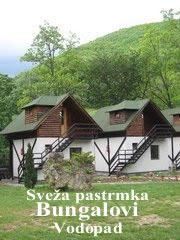Skull Tower
The Skull Tower (Serbian: Ћеле Кула, Ćele Kula), a unique monumetnt to the struggle for freedom, is the best known sight in city of Nis. It represents a unique monument of this kind in the world, and it faithfully depicts the true nature of the Turkish crimes against the Serbian people.

On May 31, 1809 on Cegar Hill some kilometers from Nis, Serbian insurrectionists suffered their greatest defeat in the First Serbian Uprising against the Ottoman Empire (1804-1813). The insurrectionists' advance towards Nis was stopped here and, when the far stronger Turkish forces attacked, the battle was ended by the Serbian commander Stevan Sindjelic (Sinđelić), who sacrificially fired at his gunpowder depot in order to avoid surrendering to the Turks, killing himself, the rest of his men, and about 6000 Turks.

After the battle, the brutal Turkish commander of Nis at that time, Hursid Pasha, ordered that the heads of the killed Serbs were to be mounted on a tower to serve as a warning to whoever opposed the Ottoman Empire. In all, 952 skulls were included, with the skull of Sindjelic placed at the top. The scalps from the skulls were stuffed with cotton and sent to Istanbul as proof for Sultan Mahmud II.
The tower stood exposed in the open air until the liberation of Nis in 1878. Today, only 58 skulls remain, including Sindjelic's one, because, by that time, much of the tower had deteriorated from weather conditions or from the removal of skulls for burial by relatives of killed rebels. In 1892, a chapel was built over the skulls
In 1833, on his way back from Constantinople, French poet Alphonse de Lamartine stopped for a moment in front of Skull Tower. He was shocked at the sight of it and wrote down in his book, later published as his travel accounts Journey to the East, the famous words: "My eyes and my heart greeted the remains of those brave men whose cut off heads made the corner stone of the independence of their homeland. May the Serbs keep this monument! It will always teach their children the value of the independence of a people, showing them the real price their fathers had to pay for it.".





